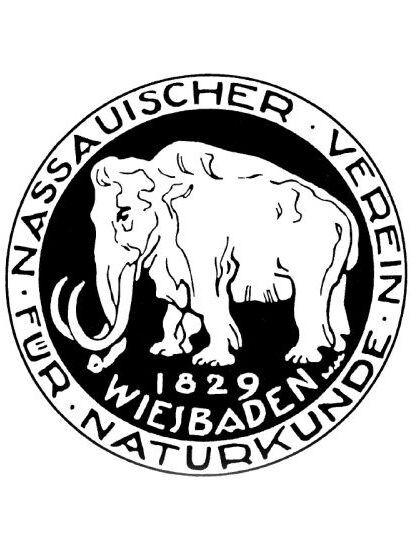Nassau Society for Natural History
For over 180 years, the Nassau Society for Natural History has been committed to researching and communicating scientific content.
On August 31, 1829, at the suggestion of Major Anton Philipp Freiherr von Breidbach-Bürresheim, 141 Wiesbaden residents founded the "Association for Natural History in the Duchy of Nassau", which was given its current name after Nassau was annexed by Prussia in 1866.
The aim of the association was "... to arouse interest in nature and its study, to make the latter possible and to promote it through well-organized collections from all natural kingdoms and to give natural history as much relevance to practical life as possible." The foundation took place on the first floor of the Erbprinzenpalais (today the headquarters of the Wiesbaden Chamber of Industry and Commerce) in Wilhelmstraße. The Natural History Museum (now the Natural History Collections in the Wiesbaden Museum) was also established here at the same time, and its initial holdings included the bird collection of Baron von Breidbach-Bürresheim, the mineral and rock collection of Baron Karl vom und zum Stein and the butterfly and insect collection of Johann Isaac Freiherr von Gerning.
Johann Karl Jakob Thomae introduced the scientific and popular lectures in 1838, which are still held today. The 1840s marked the first heyday of the association, which at that time had more than 500 full members and a large number of corresponding and honorary members. Since 1844, the association has published the Jahrbuch des Nassauischen Vereins für Naturkunde, of which 133 volumes have been published to date. Many important scientific works on the geology and biology of the region and the content of the NWS have been published here. All of the association's publications are now available digitally on CD, and since 2010 the first page of each specialist article in the yearbook can also be viewed on the association's homepage. From 1866, women also became members of the association.
Chairmen at this time were the geologist Carl Ludwig Fridolin von Sandberger, the chemist Carl Remigius Fresenius, the entomologist Carl Ludwig Konrad Kirschbaum, the geologist and bat expert Carl Koch and the otologist and butterfly expert Arnold Andreas Friedrich Pagenstecher. They were followed by the chemist Heinrich Fresenius and the geologist August Leppla. After the latter's death, the grammar school teacher and later head teacher Friedrich Heineck took over the management of the association, which he led until 1960, with an interruption from 1938 to 1945.
In 1915, the association and its natural history collection moved into the north wing of the new museum building, which had been built by the city of Wiesbaden, which had owned the museum since 1900. Heineck saw the main task of the display collections as educating visitors. He was supported in this by the geologist Max Galladé, the curator of zoology Christian Fetzer and the taxidermist Joseph Burger.
During the National Socialist era, Heineck resigned as chairman in 193 and Karl Fill, director of the Natural History Museum since 1938, became his successor. The fate of the members of the association who were persecuted by the Nazis as Jews and had to leave the association by 1938 is reported in the yearbook 128/2007.
The first general meeting after the war took place on April 15, 1946. Heineck was re-elected as chairman. Lectures were resumed in the winter of 1946/47 and the first excursions were organized in 1947. The natural history display collection was re-established with great difficulty. Fritz Neubaur, who had been working at the museum since 1948 and had been head of the natural history collection since 1951, provided important assistance. By the end of 1956, the number of members had risen to over 400.
In 1960, the geologist Karl Franz Michels took over the chairmanship of the association. Under his successors, geologists Hansjoachim Lippert and Ernst Pauly, there was a steady decline in membership numbers despite an ambitious program of events. It was only under their successor from 1996, the geologist Hans-Jürgen Anderle, that the number of members rose again to over 330. This was due to the opening of the association to the outside world and not least to the association's media-effective efforts to preserve the natural science collection, the existence of which was at times endangered by the shift in the focus of the museum's work to modern art.
The association has already been awarded the gold city plaque of the state capital of Wiesbaden three times: in 1952 after the completion of the reorganization of the display collection, in 1979 on the occasion of its 150th anniversary and in 2004 at the 175th anniversary celebrations in the Kurhaus.
Literature
175 Jahre Nassauischer Verein für Naturkunde und Naturwissenschaftliche Sammlung des Museums Wiesbaden 1829- 2004. Jahrbücher des Nassauischen Vereins für Naturkunde 125, Wiesbaden 2004.
